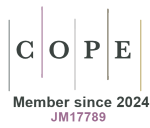Economic Evaluation of Nevirapine plus Raltegravir as Maintenance Antiretroviral Therapy in Virologically Suppressed HIV-1 Infected Patients
DOI:
https://doi.org/10.33393/grhta.2016.416Keywords:
Antiretroviral therapy, Cost, Nevirapine, RaltegravirAbstract
Background A one-year cost analysis was conducted to estimate the impact on the Italian National Health Service (NHS) of nevirapine plus raltegravir administration as maintenance antiretroviral therapy in virologically suppressed HIV-1 infected patients. Methods Patient data were retrieved from the electronic medical record system in use (year 2014) in a reference HIV centre in Northern Italy. The analysis considered patients with long-term (more than one year) virological suppression (HIV-1 RNA <50 copies/ml) on Highly Active Antiretroviral Therapy (HAART) and no prior exposure to integrase inhibitors (INIs). To estimate the total HAART expenditure, we calculated the annual treatment cost for each enrolled patients. Subsequently, to estimate the dual therapy hypothetical expenditure, we assumed to treat the same patients with nevirapine (400 mg) and raltegravir (400 mg twice daily). We took into account only drug costs (ex-factory prices, included all discounts and VAT) from the perspective of the Italian NHS. Results In 2014, the total expenditure for the 103 enrolled HIV-1 patients treated with HAART was €814,543. The mean treatment cost per patient was €7,908. If all patients were treated with the dual therapy (nevirapine and raltegravir), the total expenditure would be €573,298 (-29.6%) with a mean treatment cost per patient of €5,566. Conclusions From the Italian NHS perspective, nevirapine/raltegravir represent a cost-saving option as maintenance antiretroviral therapy in virologically suppressed HIV-1 infected patients.










